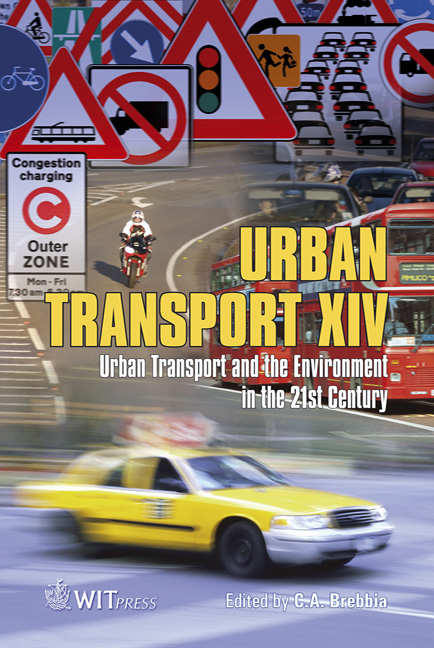A Time-series Analysis Of The Relationship Between Urban Layout And Automobile Reliance: Have Cities Shifted To Integration Of Land Use And Transport?
Price
Free (open access)
Transaction
Volume
101
Pages
10
Page Range
415 - 424
Published
2008
Size
1,004 kb
Paper DOI
10.2495/UT080411
Copyright
WIT Press
Author(s)
M. Taniguchi, R. Matsunaka & K. Nakamichi
Abstract
Changes in land-use patterns and personal lifestyles, as influenced by motorization, have caused serious problems: decreased usage of public transportation, the decline of city centers, and increased fuel consumption. In developed countries, low-density urban areas are expanding: urban sprawl is continuing because of further urbanization. Results of several studies show that, through better land use and transportation integration, the compact urban layout is effective for reducing gasoline consumption and achieving a sustainable society. The relationship in major world cities between population density and energy consumption has already been analyzed in some studies using crosssection analysis. Furthermore, many studies undertaken since the late 1990s have described sustainable development through usage of a more compact urban layout. Actually, many municipalities have accepted and promote compact urban layout as a policy. However, a basic trend in the relationship between urban layouts and automobile reliance over a prolonged period has not been investigated considering recent time-series data. This study is intended to identify the change in the relationship between automobile usage and urban layout factors, particularly population density, for the purpose of suggesting measures for land use and transport integration. Changes in automobile fuel consumption were calculated using data from Nationwide Person Trip Surveys (conducted in 1987, 1992, 1999, and 2005) for 38 Japanese cities (including local and metropolitan area cities). Subsequently, the relationship between automobile fuel consumption and factors such as city type and public transportation conditions was analyzed using multiple regression models. The results show an increase of low-density cities, in which residents are consuming much automobile fuel, implying that cities of dispersed (not compact) type are increasing. In addition, population density is not the only important factor that influences automobile usage. Keywords: CO2 emission, automobile usage, population density, compact city.
Keywords
CO2 emission, automobile usage, population density, compact city.





